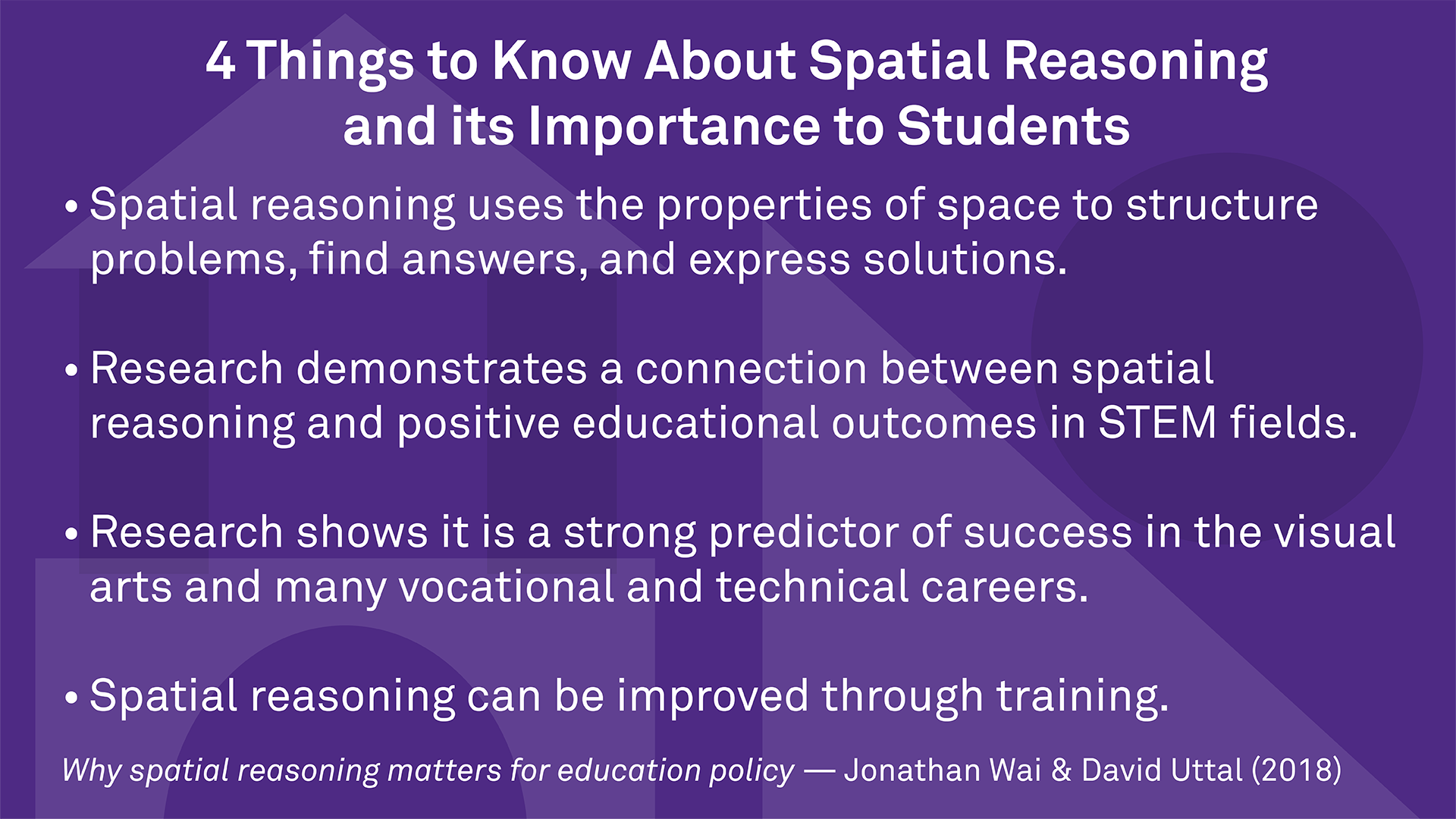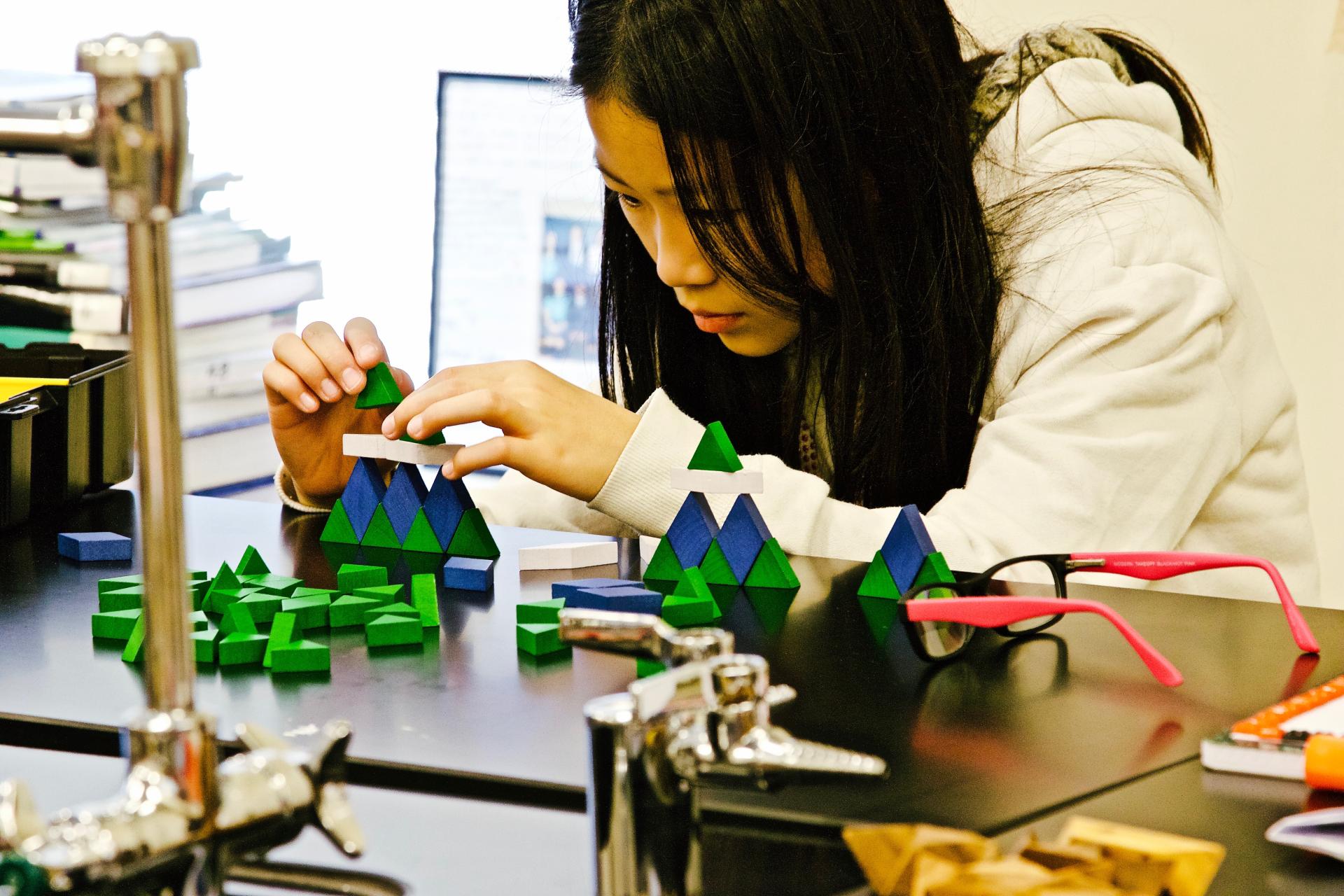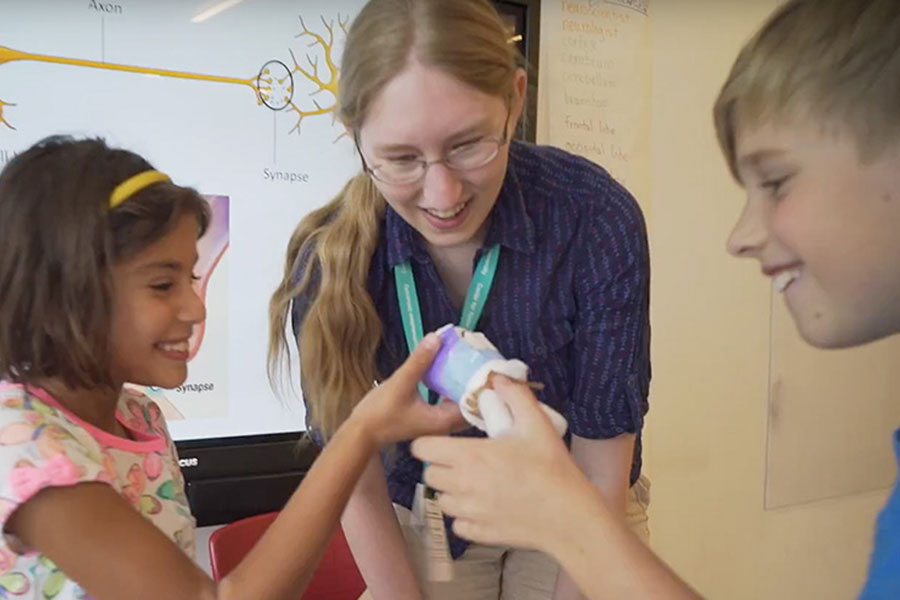The Importance of Spatial Reasoning as a Talent Development Focus
By Dr. Susan Corwith, CTD Director
Spatial reasoning is getting a deeper look in the field of talent development and the work Northwestern professor of education and psychology, David Uttal.
I recently spoke with Professor Uttal about his work in this area and why research on spatial reasoning is so important to pursue.
According to Uttal, spatial reasoning is “largely about relations”, and relational thinking is being able to discern things like patterns, connections, variations, or movements across space. While we do this type of thinking in our daily activities, it is also essential to work in math, science, and engineering.
“Relations are fundamental to these subjects,” Uttal explains. “Think about working with DNA, the structure of atoms, mapping the orbits of planets, or the way numbers work.” All these examples involve some form of spatial thinking or reasoning.
Research demonstrates that spatial reasoning, which includes the ability to mentally visualize, retrieve, transform, rotate, represent, and recognize symbolic information (Lohman, 1996), is part of our daily lives and constitutes the core work of many academic and professional careers. Uttal notes that spatial reasoning research also shows it is key to innovation and creativity in STEM fields. However, spatial reasoning is not deliberately taught nor often discussed in most K-12 educational settings.
Much more of the focus in schools is on developing strong reading and mathematics skills, which are essential but are also subjects addressed in state and federal policies, included in most accountability measures, and understood as indicators of readiness for higher education. As a result, schools regularly assess reading and math achievement and verbal and mathematical reasoning. And in parallel, assessments of general verbal and mathematical reasoning are common tools for identification for gifted education services.
Given what has been learned about spatial reasoning, not assessing nor teaching these skills in a systematic way inside and outside of schools means missing a lot of students with the potential to innovate, create, and achieve at high levels in a wide variety of domains. Scholars including Uttal have been working on ways to identify and train spatial reasoning and bring this knowledge to educators, parents, and others who engage with youth. “If we pay attention to these skills and abilities, it will draw in more young people,” Uttal says. It would allow for more students to discover valuable abilities and leverage their strengths in different ways.
Giving more students the chance to identify their abilities and then to develop them is a critical next step in addressing this opportunity gap. For the last several years, CTD has been engaged in a project led by Joni Lakin, assistant professor of educational research at the University of Alabama, and involving Uttal, to develop a spatial reasoning test battery and tools to help educators make use of spatial reasoning in their classrooms. As part of that project, a group of CTD educators learned more about spatial reasoning and strategies they can use to introduce it through their lessons. The goal is to help educators recognize students’ spatial abilities and cultivate them.
Because CTD’s mission focuses on talent development, we at CTD are interested in the many ways talent can be defined, identified, and nurtured. As the director of our center, I recognize that we have a responsibility to expand the way we identify students, support parents, provide optimal learning environments, and train educators to implement better practices, which is why we jumped at the chance to support this spatial reasoning research project and introduce our teachers to this work.
Uttal notes that the potential for making a significant impact on student learning and achievement is supported by research demonstrating that these abilities are malleable through practice. Like with any other skill set, practice matters.
“Spatial thinking can be substantially improved by practice. Mindset matters too,” Uttal explains. “If you say you are not good at something, you don’t tend to practice or see the value of practice. We need to encourage young people to use these skills.”
Uttal and his team are currently exploring a variety of pathways to improve spatial reasoning and understand how it develops, particularly in children. A team of researchers is also exploring how informal learning environments and outside of school activities engender spatial thinking and enrich STEM learning.
At CTD, we aim to make use of new spatial abilities assessments as they become available and will continue to work with Lakin, Uttal, and other colleagues to create opportunities for educators, students, and caregivers to recognize and use spatial reasoning regularly in classrooms, in out-of-school programs, and at home.
Learn more about Professor David Uttal, the S.T.A.R. Lab, and current research: https://uttallab.northwestern.edu/about/
Lohman, D.F. (1996). Spatial ability and g. In I Dennis & P. Tapsfield (Eds.), Human abilities: Their nature and assessment (pp. 97-116). Hillsdale, NJ: Erlbaum.
Wai, J. & Uttal, D. (2018). Why spatial reasoning matters for education policy. Washington, DC: American Enterprise Institute. https://eric.ed.gov/?id=ED592011
Igniting Spatial Talent Development
A Conversation with Professor Joni Lakin
Joni Lakin, professor of educational studies at the University of Alabama has been working with professor David Uttal at Northwestern and other researchers to understand how and why students with strengths either only or primarily in the spatial realm tend to get overlooked in K-12 education. Their four-year grant is following 2,300 students and 30 teachers in urban, rural, and suburban districts—in Illinois, Alabama and Arkansas—and the work thus far has included a large-scale validity study to develop norms and technical guides, as well as cognitive lab and eye-tracking studies. Still to come, examining test reliability and sensitivity, and the final data analysis and dissemination of findings, scheduled to occur in 2025.
The team has been working with CTD to help flesh out what the in-classroom response would look like, once the results on the new CogAT for spatial reasoning start rolling out. While teacher resources and guides exist for how to use the verbal, quantitative and nonverbal CogAT scores to design curricula, the interventions might look different on the spatial side, Dr. Lakin says.
Read the full article in CTD’s spring edition of the Talent newsletter online: https://www.ctd.northwestern.edu/spring-2023-talent-newsletter#Spatial
Spring and Summer Program applications for in-person and online offerings are open. Check out the full list of courses on the CTD Courses web page.

